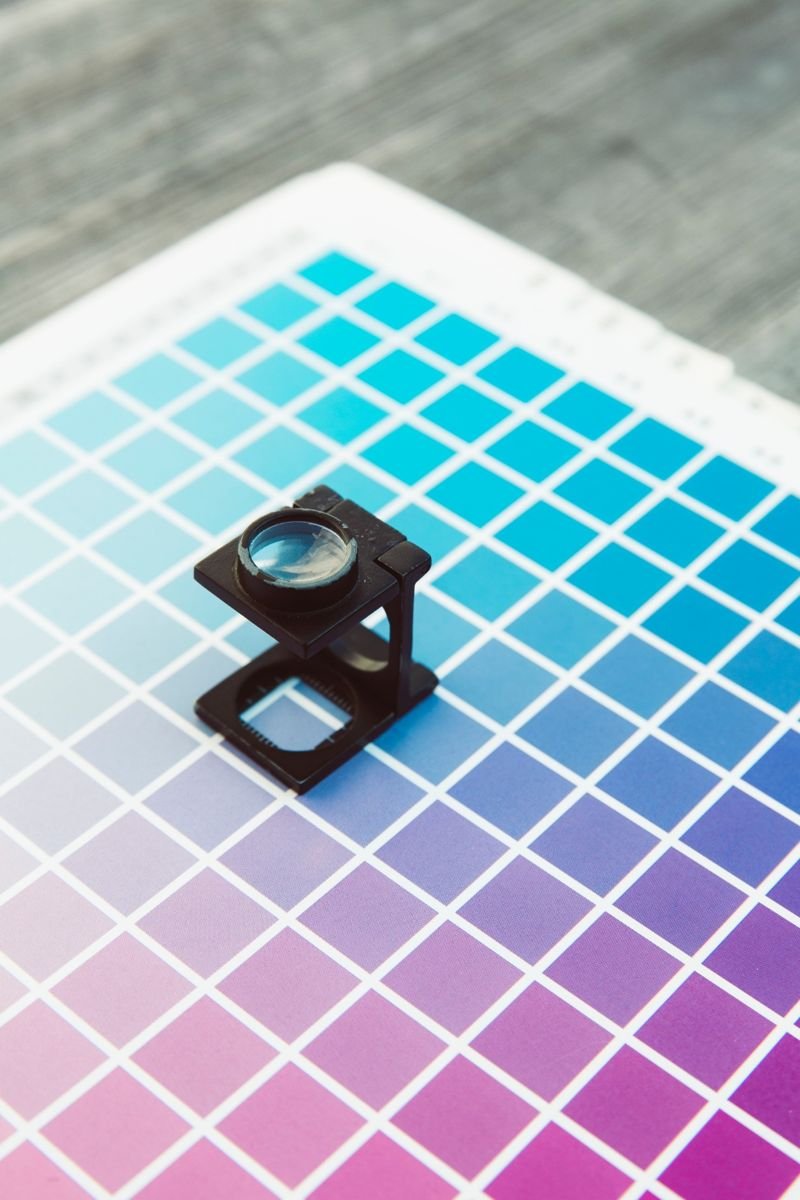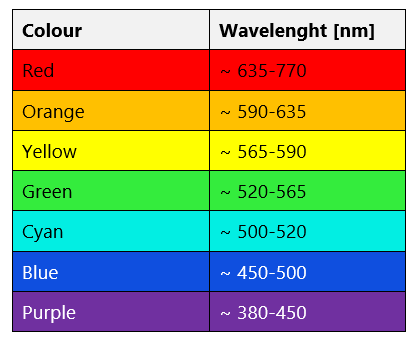When Did Color Cameras Come Out
The apply of dyes to give colour to products is a common and obvious exercise in industry. The colour palette is used by almost every manufacturing industry. The use of colours is intended to identify the production with the brand, increment product bewitchery, and evoke emotions or desirable customer behaviour.

Knowing the importance of colours in the lives of consumers and producers, nosotros have prepared a large amount of information on this topic.
Calorie-free as a source of colour
When talking about colours, it is impossible not to mention light. It is i of the most important issues, and noesis in this field volition help you lot sympathize the mechanism of colour cosmos, and find the answer to the question of how we come to see things. So let us offset from the very beginning.
The nature of calorie-free has been mysterious and hard to understand for many years. Today, nosotros know that calorie-free behaves both as a moving ridge and as a stream of particles. This phenomenon is chosen a moving ridge-particle duality.

Electromagnetic waves with a length of 380-780 nanometres are called visible light. White light is produced by mixing 7 elementary single colours called the basic colours. After decomposing, they can be observed in the form of the ordinarily known vii colours of the rainbow. This miracle appears in the sky on sunny days when it rains. Falling drops of water act as a prism and split white light into its components, i.east. colours. Each of the 7 colours corresponds to a specific wavelength range. Electromagnetic wave with the longest wavelength (635-770 nm) is ruby, while the shortest one (380-450 nm) is responsible for seeing purple.
The bones colours that nosotros see are shown beneath. If the wave is of intermediate length from two side by side ranges, and so transitional colours are created.
Why do we come across colours?
Now that we know that certain electromagnetic wavelengths accept a defined color, let us consider why we run into colourful objects.
Colour vision results directly from the sensitivity of the respective receptors in the heart to the light wavelength. We can see the colours of different objects (due east.thou. crayons or flowers) because they reflect and absorb the rays of low-cal that fall on them. These objects do non smoothen with their ain lite, simply absorb specific electromagnetic wavelengths from the visible calorie-free range, reflecting the remaining ones. We meet a certain colour because function of the radiation reflected from the surface of the object reaches our eyes.

For a better understanding of this mechanism, it is best to explain it with an example. Cherry poppies blot electromagnetic rays of all wavelengths except those corresponding to red color. Waves of this length are reflected, causing the eye to meet reddish colour when the waves attain the heart. When an object is white, information technology means that all white low-cal is reflected from information technology. Black objects, on the other hand, absorb all wavelengths in the visible light range.
Physiology of colour perception – how does it happen that we run across?
The phenomenon of absorption and reflection of electromagnetic waves, thanks to which we can run into the earth around us in color, would not be possible without eyes. They are extremely sensitive organs of the sense of sight, which participate in the creation of images, usually known as vision.
To observe out why we see electromagnetic moving ridge as colour, nosotros demand to look at the structure of the center. The sight organ is equipped with photosensitive receptors, i.due east. rod cells and cones. Photosensitive cells are located in the back of the eyeball chosen retina. Rod cells are responsible for perceiving shape and movement. They are and then sensitive that they can grab even a single photon. Cones, on the other hand, are responsible for seeing colours. There are three types of cones in the human being eye, which react to unlike wavelengths, and, consequently, allow one to see red, blue and green colours. If the receptors annals intermediate wavelengths, all three groups of cones react to the stimulus, creating an impression of an intermediate colour in the brain made up of three basic colours.

Paradigm creation machinery
Visible light is nothing more than than electromagnetic waves in the 380-780 nm range. Light falling on an object is partly absorbed and partly reflected by information technology. Then, the electromagnetic moving ridge reflected from the object is directed to the receptors in the eye, i.eastward. cones and rod cells in the retina, where a reduced and inverted prototype is created. In the side by side phase, the receptors transmit an impulse to the brain, in which the data is interpreted, and on its footing an image of the object is produced. Everything happens extremely quickly, which you tin can see by looking around. The colours that we see are immediately registered and processed, creating an epitome.
The incredible sight organ, the eye, distinguishes an enormous number of colours. According to literature, in that location are several million of them. It is worth noting that colour is not a feature of light, merely only an impression produced past an electromagnetic moving ridge of a certain length in the encephalon.
Seeing a colour is momentary, and is not recorded in our memory. Therefore, it is extremely difficult to recognize the same colour once more considering we do not accept a design to which we tin compare a colour. Knowing that colour vision is subjective, it is important to remember that the interpretation of color by different observers tin can be ambiguous and imprecise.

Methods of colour clarification and cess
Human eye cannot objectively assess the colour, but at that place are devices that measure color precisely. Instrumental methods permit to define the color in numerical grade based on a standardized calculation using colorimeters or spectrophotometers. The mathematical colour record was adult by the International Committee on Illumination (CIE) and is consistent with the visual assessment.
Colour tin be described using iii attributes: hue, effulgence and saturation.
- Hue is a colour characteristic that depends on the radiation of a specific wavelength, which is captured by the receptors in the eye. And so, we can see a specific color, e.g. green, cherry or blue. Colours that have hue are chosen chromatic colours.
- Effulgence, or colour intensity, is the sensitivity to radiation intensity that causes the colour to develop. A measure out of colour effulgence is luminance, which in daylight has the highest value for the xanthous-green colour with a wavelength of 555 nm, and at night for a wavelength of 510 nm corresponding to the blue-green color.
- Saturation means mixing a chromatic colour with white, grey or black. Pastel colours are called unsaturated ones because they incorporate a lot of white colour.
The colour attributes presented are also standardised by the CIE organisation, which makes information technology possible to fully describe a colour using the three variables.

Colour tolerance
Given the fact that a model of ideal color matching on an industrial scale is unachievable, it is a common practice to set colour tolerance ranges. The lack of 100 % color matching may be due to a number of reasons, including differences in the supply of raw materials for production that have been dyed. Another reason is colour modify during follow-upward processes in the production. In fact, each batch of products has a certain colour divergence. The extent of this fault is the range within which the colour can exist considered acceptable and almost in line with the established pattern. The definition of colour acceptability is usually established individually betwixt contractors.
RGB model
Another way to describe colours is the RGB model. It is a style of expressing colour space in a coordinate arrangement, described past the RGB abbreviation originating from English names of colours: R – red, G – light-green, B – blue. Information technology is based on the impression of seeing past a human being eye whatever colour that is created by mixing iii beams of light in these colours in specific proportions. Merely this model can explain how the color impression in the human being brain is created. Unfortunately, the model has a few drawbacks – for case, it does non explain why lighter colour or pure white is non produced when bright colours are mixed together. It is important to bear in mind that the RGB model is only a theoretical one, and its reproduction depends on a specific device.
CMY or CMYK model
The existing CMY colour model in practise is not a sufficient basis for obtaining all the colours differentiated past human being heart. Mixing together the components of the model, i.eastward. bluish (cyan), red (magenta) and yellowish, will never produce black. That is why we often talk virtually a CMYK model that is complemented by the black colour chosen One thousand – the key colour (black). It is the most ordinarily used colour model to create multi-colour prints or reckoner graphics. The individual colours of the CMYK model tin be obtained by combining the four master colours, using advisable proportions.

Theory versus practise – colour clarification and assessment
At present that you know the most popular colour assessment models, information technology could be stated that it is plenty to mix the RGB model colours with the CMYK model colours and, theoretically, we should obtain all possible colours. However, it is non the instance. Why? Because human eye does not react linearly, and dyes and colourful materials are not perfect. Therefore, different methods of masking imperfections are used in practise. The methods to compensate for these defects are referred to equally colour product, which include e.g. press, industrial dyeing or the production of crayons, paints and varnishes.
It turns out that the problem is non to produce a specific color, just to express information technology – what exactly it should be similar. How to define and proper name a colour so that the name is understood by anybody in the same way? This question has not yet been answered, but perchance in the time to come a universal color coding arrangement will be developed to solve this problem.
Source: https://www.products.pcc.eu/en/blog/how-are-colours-created-and-why-do-we-see-them-colour-models-and-methods-of-their-description/
Posted by: bentonshapithe.blogspot.com



0 Response to "When Did Color Cameras Come Out"
Post a Comment